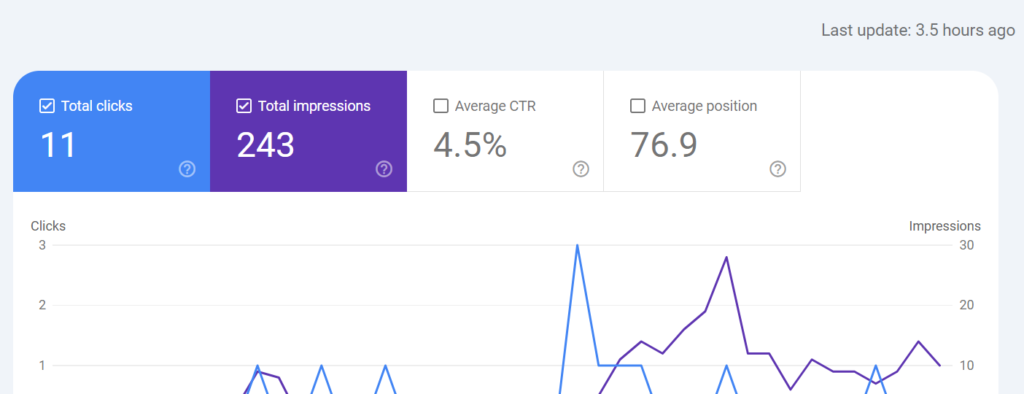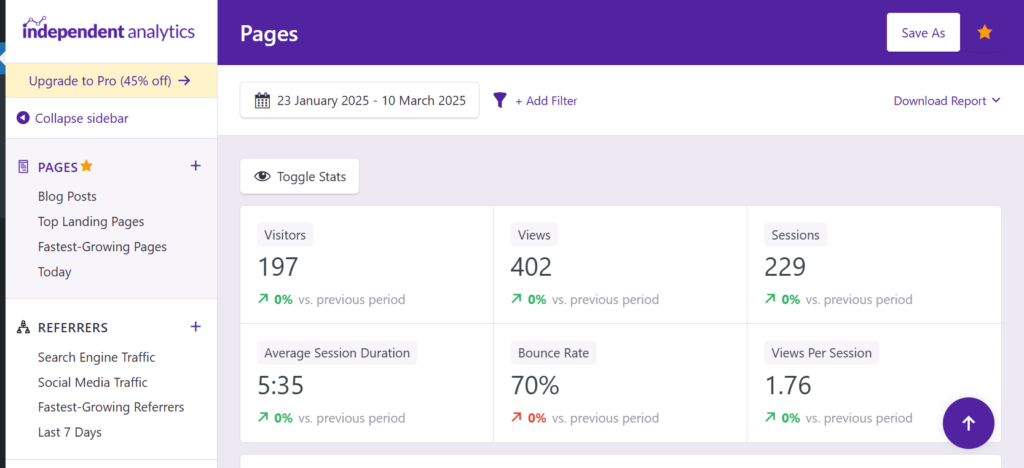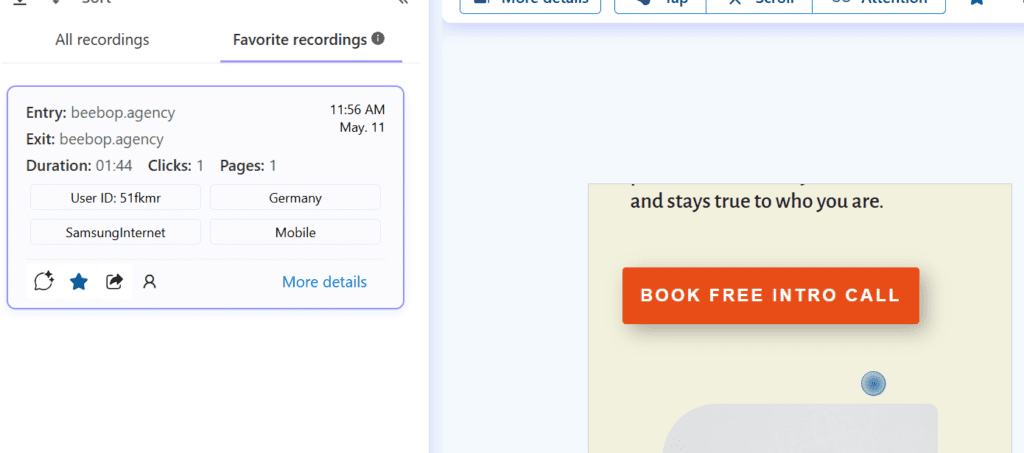How many people visit your website? Do they come from Google, LinkedIn or Instagram? How long do they stay? At what point do they leave? How many people click on your contact form?
If you don’t know, that means you don’t use analytic tools. Which is a shame and a waste of time & money because these numbers tell you whether your website is doing its job—bringing in relevant traffic and leads.
But you don’t have to break the bank or sweat over complicated reports to get this data.
The tools I’ll recommend are not robust, complicated tools like Ahrefs or Google Analytics with tons of features you actually don’t need as a solopreneur.
The tools I’ll talk about today have:
- simple and intuitive dashboards
- features that can really help make decisions relevant to your solo business—and are
- free to use (but not in that “you can use just 1 basic feature” kind of way)
A.k.a. – they’re perfect for a woman solopreneur like yourself. 😉
Also, I use them every day (but no worries, there aren’t any affiliate links—at least for now ;D).
1. Google Search Console
Google Search Console shows how your website appears in Google Search. You can see which keywords people are using to find you, how many impressions and clicks you’re getting, and where you rank in search results.

Most important features for solopreneurs:
URL Inspection Tool: check whether your page is indexed on Google and submit new blog posts or updated pages to Google for indexing.
Performance Report: check out which keywords are driving traffic, your average ranking position, and click-through rate.
Coverage Report: Check for broken pages or errors that might hurt your visibility.
Use the data from GSC to tailor your content. If a certain post is getting a lot of impressions but few clicks, consider updating its title or meta description to be more appealing.
2. Independent Analytics (IA)
This website analytics plugin is so much easier to set up and use than the celebrated and often bloated Google Analytics 4 (especially after the GA4 update – R.I.P old GA!).
The free version tracks visitors, page views, traffic sources, countries users come from, and referral links, etc.
Unlike GA4, it doesn’t require cookies or user consent banners – which is great news if you’re concerned with online privacy.

Most important metrics for solopreneurs:
Time on page
Bounce rate (how quickly people leave your site)
Top-performing content
Which platforms are sending you traffic (Instagram, Pinterest, Google, etc.)
Download Independent Analytics (official website).
3. Microsoft Clarity
With Microsoft Clarity, you can literally see the user’s screen as they navigate your website. This makes it easier to see at which point they leave the site and how many times they click on a link or something that looks like one.
It also records those website sessions so you can replay them anytime you want and even save them for future reference.
This data can help you see whether your website copy is too long/too short, whether your UX and design are intuitive, etc.
Alongside Google Search Console, this is a forever free tool.

Most important features for solopreneurs:
Heatmaps: visualisations of where users click the most and how far they scroll
Session Recordings: replays of actual visits to understand their journey
Rage Clicks Detection: where users get frustrated and click repeatedly
Dead Clicks: elements that look clickable but aren’t (confusing UX)
Download Microsoft Clarity (official website).
4. Keysearch (SEO Tool with free trial)
Keysearch is a great SEO tool for SEO newbies and solopreneurs.
You can see, among other stuff, what your potential clients are searching for, how difficult it is to rank for those terms, and what your competitors are doing.
Yes, same thing as Ahrefs or Moz – but for a fraction of their price (the 7 day trial is free while the monthly rate is 24 $).
I personally use the Starter Plan because I’m regularly writing blogs, and this plan is good enough for my current needs.
Features to try during the free trial:
Keyword Research: see search volume for queries people type into Google, their difficulty scores, and suggested phrases
Competitive Analysis: check which keywords your competitors rank for
Content Assistant: helps you optimize a blog post around a target keyword
Register for the free trial version of Keysearch
How often should I check my website’s analytics?
Brace yourself, because the answer is: it depends.
But, seriously. The best is to find a frequency that’s somewhere in the middle so you’re not a control freak (checking once per day) or plain uninterested (checking every two years).
Tracking your website analytics on a daily basis doesn’t make sense because it takes time for a new web page or blog to rank or start to get social media traffic. Unless you’re in a crazy popular niche or you already have very engaged social media followers.
On the flip side, waiting six months or more to check in? Also not great. It’s hard to remember what changes you even made that far back, let alone connect them to your traffic or conversions.
A good rhythm for most solopreneurs is to check your analytics once a month. Look at how things changed compared to the previous month (or another period that matters to you).
Track any updates you made—like rewriting your About me page or publishing a new bottom-of-the-funnel (BOFU) blog post—and see if they had an impact. Did traffic go up or down? Did you get more or fewer inquiries through your website form?
The point is to always know what you’re tracking and how you will strategically use that data in the future. Staring at numbers and downloading reports just for the sake of it won’t get you anywhere.



